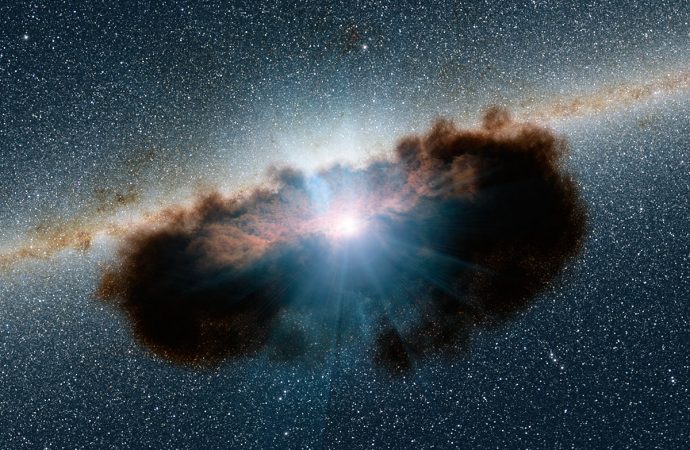The ‘dust doughnut’ is a lot more interesting than normal space dust, for it surrounds a supermassive black hole.
It won’t taste very good. We have for the first time imaged one of the doughnuts of dust long thought to encircle some supermassive black holes.
Astronomers think all galaxies are “active” at some point in their lifetimes, meaning that the central supermassive black hole feeds on a circling disc of gas. Although that disc can be so bright that it outshines the entire galaxy, some seem to be obscured by a doughnut-shaped structure of dust and gas, called a “torus.” Yet because the centres of these active galaxies are so distant, a dusty torus has never been seen – until now.
Santiago Garcia-Burillo of Spain’s Madrid Observatory and his colleagues used a radio telescope array to image the torus of NGC 1068, a galaxy 50 million light years away. Although it is one of the brightest and nearest active galaxies, its torus still appears tens of thousands of times smaller than the moon.
The discovery required 35 radio dishes on the Atacama Large Millimeter/submillimeter Array (ALMA) perched in the high desert of the Chilean Andes. “It’s an absolutely remarkable observation,” says Jack Gallimore of Bucknell University in Lewisburg, Pennsylvania. “It’s a real testament to how much of a powerhouse ALMA is.”
It should also shed light on a long-standing problem in astrophysics, namely what causes a galaxy to become active, says Gallimore. Although we know that clouds of gas must fall from the galaxy towards the supermassive black hole, it’s not that simple.
As the gas falls inward, it spins faster, allowing it to reach a circular velocity like Earth’s orbit around the sun. “A cloud would eventually be spinning so fast that it would just achieve a stable orbit around the black hole,” says Gallimore. “So that prevents it from falling in and feeding the black hole.”
And yet these supermassive black holes actively accrete gas and dust – enough to grow to millions or billions of times the sun’s mass. So if astronomers can see how gas flows through the torus, they are likely to get a better handle on what sparks the black hole feeding frenzy behind an active galaxy.
Source: New Scientist

































Leave a Comment
You must be logged in to post a comment.